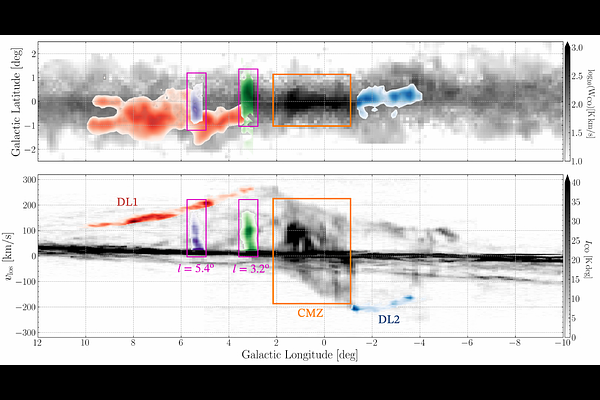Extreme cloud collisions in nearby barred galaxies

Extreme cloud collisions in nearby barred galaxies
Tutku Kolcu, Mattia C. Sormani, Witold Maciejewski, Sophia K. Stuber, Eva Schinnerer, Francesca Fragkoudi, Ashley T. Barnes, Frank Bigiel, Mélanie Chevance, Dario Colombo, Éric Emsellem, Simon C. O. Glover, Jonathan D. Henshaw, Ralf S. Klessen, Sharon E. Meidt, Justus Neumann, Francesca Pinna, Miguel Querejeta, Thomas G. Williams
AbstractThe inner regions of the Milky Way are known to contain an enigmatic population of prominent molecular clouds characterised by extremely broad lines. The physical origin of these ''extended velocity features'' (EVFs) is still debated, although a connection with the ''dust lanes'' of the Galactic bar has been hypothesised. In this paper, we search for analogous features in the dust lanes of nearby barred galaxies using the PHANGS-ALMA CO(2-1) survey. We aim to confirm existence of EVFs in other galaxies and to take advantage of the external perspective to gain insight into their origin. We study a sample of 29 barred galaxies and find that 34% contain one or more EVFs, while the remaining lack obvious signs of EVFs. Upon analysing the physical properties of the EVFs, we find they possess large virial parameters, ranging from few hundreds to several thousand, indicating that they are strongly out-of-equilibrium. The most likely explanation for their origin is extreme cloud-cloud collisions with relative velocities in excess of 100km/s in highly non-circular flow driven by the bar. This interpretation is consistent with previous high-resolution observations in Milky Way. Further corroboration of this interpretation comes from the inspection of high-sensitivity infrared observations from the PHANGS-JWST Treasury Survey that reveals streams of gas that appear to be hitting the dust lanes at locations where EVFs are found. We argue that EVFs are the clearest examples of cloud-cloud collisions available in literature and represent a unique opportunity to study cloud collisions and their impact on star formation.